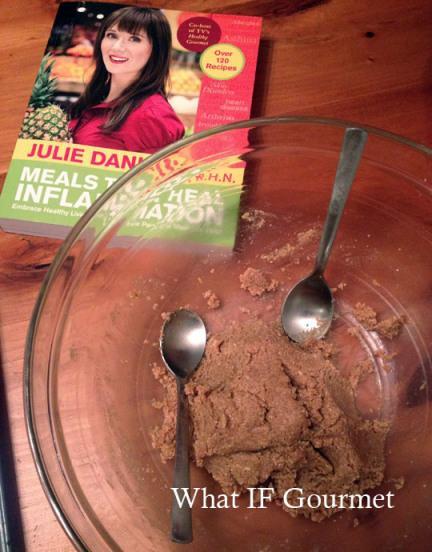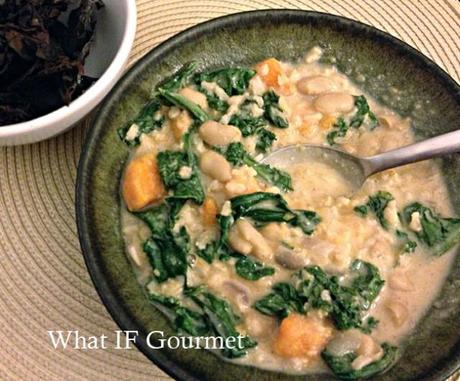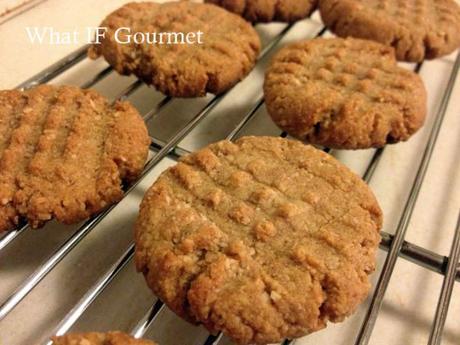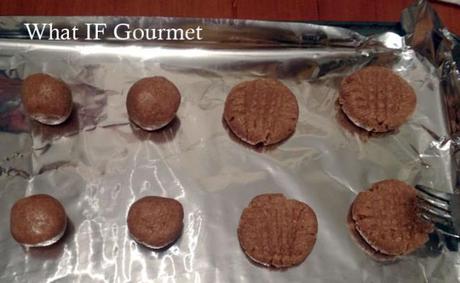When I was first diagnosed with Sjogren’s Syndrome and started researching the potential effects of an anti-inflammatory diet on autoimmune disease, I read every inflammation-free eating plan cookbook I could get my hands on. After combing through at least a dozen such tomes, each preaching its own variation on anti-inflammatory eating, I can say that one of my favorites is also one of the most recently published: Julie Daniluk‘s Meals That Heal Inflammation.

Unlike so many of the eating plans I’ve found that insist on one “right way” to be healthy, Meals That Heal Inflammation takes the refreshing approach that, because our bodies have individual needs based on our own genetics, taste preferences, habits, and health conditions, no one eating plan can serve everyone equally well. In clear, accessible language, Julie Daniluk outlines some basic principles for anti-inflammatory eating, and then offers a detailed elimination/testing plan for discovering your own body’s particular inflammation triggers. The first half of the book shares the author’s own challenging health history, explains how an unchecked inflammatory response puts our health at risk, and describes how to conduct an elimination diet safely and effectively. The second half of the book catalogs well over a hundred recipes that offer a surprising range of allergen-free options.
This book’s common-sense approach to healthy eating not only inspires, it suggests concrete strategies for how to develop your own eating plan that works for you. Even so, committing to an elimination diet and crafting your own long-term eating plan is not an easy fix — it’s an ongoing process that takes time, energy, and focus. However, after the past nine months of conducting my own research and trying to reconcile contradictory reports on current nutrition studies, it’s a relief to have an educated professional lay out a practical testing plan that supports my journey of nutritional self-discovery.
I’m still in the testing phase of my own elimination diet based on Meals That Heal Inflammation, but the experience has already taught me that I have no problem digesting nightshades, while I am clearly gluten intolerant. Corn is next on my testing schedule, and will be followed by dairy. I’m still amazed by how great I felt during the elimination phase of the diet (when I avoided gluten, dairy, corn, and nightshades), and how clear and conclusive my body’s response was when I reintroduced gluten (in the form of absolutely delicious homemade sourdough bread made by a talented friend). The day after eating just a few slices of bread, my body was slammed with the worst bout of fatigue I have had since last spring, accompanied by a fiery flare-up of systemic joint pain that took over a week to subside. I’m not thrilled to realize I need to give up gluten, but I am so grateful to be one step closer to an eating plan that supports my individual anti-inflammatory needs. If you’re a proactive, hands-on person serious about taking control of your health, then Meals That Heal Inflammation‘s common-sense strategies would be a valuable addition to your healthful living toolkit.

African Nut Butter Stew from Meals That Heal Inflammation (2011).
I’m slowly working my way through Julie Daniluk’s recipes, but two of my favorites so far are African Nut Butter Stew and Geneva’s Ginger Cookies (recipes below). The warm, creamy, vegan stew is comfort food at its healthful best. From now on, when I am craving a big bowl of mac and cheese, this is my go-to dish. Happily, the Gent devoured this stew as enthusiastically as I did. We made it without the tiger nut powder, simply because we couldn’t find any in our local markets, but the stew was wonderful even without the optional addition. The fragrant, grain-free cookies aren’t as spicy as I had expected, offering a lightly sweet balance of almonds and spice. According to the recipe, the cookies should be crisp, but mine came out chewy. All half-dozen or so of my taste-testers prefer chewy cookies (as do I), so it wasn’t an issue. If you prefer crisp cookies, perhaps try flattening out the dough more than I did and baking a little lower and longer.
African Nut Butter Stew
Reprinted with permission from Meals That Heal Inflammation by Jule Daniluk, R.H.N.*
1 cup (250 mL) chopped onion
2 garlic cloves, minced
4 cups (1 L) vegetable stock, divided
2 cups (500 mL) diced sweet potato or yam
1 1/2 cups (375 mL) white beans (canned or cooked)
1/2 cup (125 mL) brown rice
1/4 tsp (1 mL) gray sea salt or pink rock salt
1/4 cup (60 mL) almond butter
2 cups (500 mL) chopped kale
2 Tbsp (30 mL) lemon juice
1 Tbsp (15 mL) tamari (wheat-free)
1 Tbsp (15 mL) raw honey
1 Tbsp (15 mL) grated fresh ginger root
Optional Additions:
1/4 cup (60 mL) tiger nut powder
1 cup (250 mL) extra vegetable stock
1. In a large saucepan or Dutch oven, water-saute the onion and garlic in 2 Tbsp (30 mL) of the vegetable stock over medium heat for 3 to 5 minutes.
2. Add the remaining stock, sweet potato or yam, white beans, brown rice, and salt. Cover and let simmer for 45 minutes.
3. When the rice is completely cooked, scoop 1/2 cup (125 mL) liquid from the stew into a small bowl and whisk together with the almond butter to make a paste.
4. Add the almond butter paste to the pot along with the kale. Stir and cook for 5 minutes. Turn off heat.
5. Add the lemon juice, tamari, honey, ginger root, and tiger nut powder, if using, and stir again. Note that if you opt to include tiger nut powder, you should increase the amount of broth in the recipe by 1 cup (250 mL). Serve hot.
Makes 8 servings.

Geneva’s Ginger Cookies from Meals That Heal Inflammation (2011).
Geneva’s Ginger Cookies
Reprinted with permission from Meals That Heal Inflammation by Jule Daniluk, R.H.N.*
1/2 cup (125 mL) almond butter
2 tsp (10 mL) cinnamon
2 tsp (10 mL) ground ginger
2 cups (500 mL) almond flour
1 Tbsp (15 mL) ground flax meal
6 Tbsp (90 mL) unpasteurized liquid honey
1 tsp (5 mL) pure vanilla extract
1. Preheat the oven to 350 F (175 C).
2. Place all the ingredients into a bowl and stir to thoroughly combine.
3. Roll the dough by hand into 1-inch (2 cm) balls and lightly press down with a fork. Decorate with slivered almonds.
4. Place the cookies on a baking sheet lined with unbleached parchment paper.
5. Bake 10 to 12 minutes, or until golden. The cookies will crisp as they cool.
6. Store in an airtight container.
Makes 24 cookies.

*From the author’s publicist: Nutritionist Julie Daniluk hosts The Healthy Gourmet on the Oprah Winfrey Network (OWN), a reality cooking show that looks at the ongoing battle between taste and nutrition. Her first book, Meals that Heal Inflammation, advises on allergy-free foods that both taste great and assist the body in the healing process. Check out more amazing recipes and nutrition tips at www.juliedaniluk.com. Check out Julie on Facebook at Julie Daniluk Nutrition and on Twitter @juliedaniluk.
